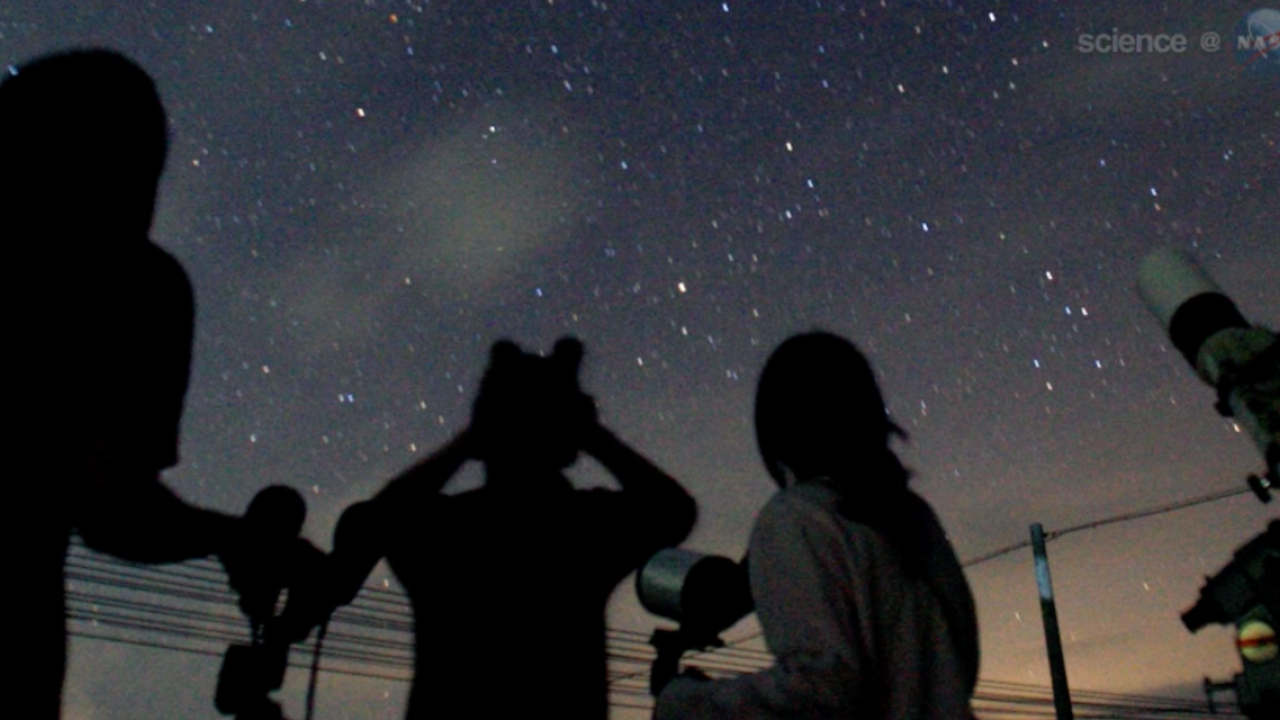Summer Night Sky Features a Total Lunar Eclipse, Meteor Shower and a Close-up Look at Mars

July has offered a buffet of astronomical wonders for sky watchers. The Daily Shot writers caught up with Kristina Punzi, the new manager of the Whitin Observatory and instructor in the astronomy laboratory, to get a short preview of what’s expected.
Punzi also serves as an American Astronomical Society Astronomy Ambassador, part of a group of astronomers trained by the American Astronomical Society, in partnership with the Astronomical Society of the Pacific. Her role at the Whitin Observatory will be to make knowledge of astronomy and the night sky available to the Wellesley community and the Greater Boston Area, by hosting events where visitors can engage with astronomers and use the Observatory’s historic telescopes.
Granted, the lunar eclipse will not be visible to North America, much of the Pacific Ocean and most of the Arctic, but it will be a dazzling phenomenon. What are the important facts?
Kristina Punzi: The lunar eclipse will only be visible in parts of South America, Africa, Europe, Australia, and Asia. If you would like to view it from North America, TimeandDate.com will be hosting a live stream starting at 2 p.m. EDT on July 27.
If you are lucky enough to be in a part of the world where the lunar eclipse will be visible, the totality will last 103 minutes, making it the longest eclipse of the 21st century. Total lunar eclipses occur when the moon, Earth, and Sun are aligned such that the moon passes into Earth's shadow, thus totality occurs when the moon is completely covered by Earth's shadow. During totality, the moon will appear red because the sunlight that allows us to see the moon is being filtered and refracted by the Earth's atmosphere, the same phenomenon we experience during sunset.
Mars is expected to appear larger and brighter in the month of July. Why does its orbit bring it so close to the Earth? How close will it be?
Punzi: In late July, Mars will make its closest approach to Earth since 2003. The orbit of Mars is not a perfect circle, hence sometimes it will be closer to the Sun (and the Earth), and sometimes it will be farther away. On average, Earth and Mars are separated by a distance of 140 million miles, but on July 27, Mars will be about 35.8 million miles from Earth.
What can viewers expect to see in the Perseid meteor shower?
Punzi: A meteor shower occurs when the Earth crosses the orbit of a comet and encounters debris left behind by a comet. Comet debris partly consists of tiny space rocks, otherwise known as meteors, and as these rocks enter the Earth’s atmosphere they burn up, producing the beautiful “shooting stars” we observe during a meteor shower. Don’t worry – a typical “shooting star” will burn up before it would ever reach the Earth’s surface!
The best nights to observe the Perseid meteor shower are the nights of August 11-12 and August 12-13. You should expect to see about 60-70 meteors per hour. The Perseids occur around the same time every year, but the brightness of the moon can sometimes make the shooting stars difficult to observe.
The Perseids happens during a time of the year where the weather is particularly nice, so it is a convenient time to view a meteor shower. I remember staying out all night to observe meteor showers with my family as a child. Viewing these types of events can surely spark an interest in astronomy.
This year, the moon will be near its new moon phase, so the sky will be favorably dark. The best advice I can give you to get the most out of this event is to be patient and get comfortable! Go to a dark area with an unobstructed view of the sky and be prepared to sit outside for a few hours. It takes a while for your eyes to adjust to the dark, so the longer you wait outside, the better the show will be.
Photo: Stargazers scan the night sky for the annual Perseid meteor shower.



